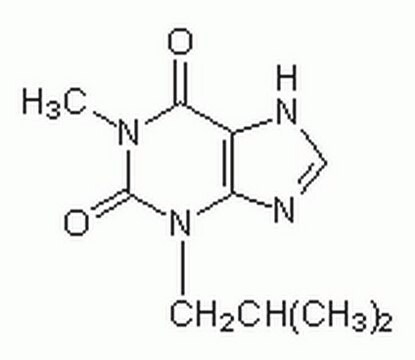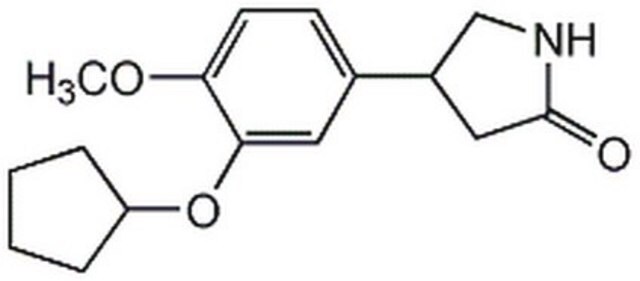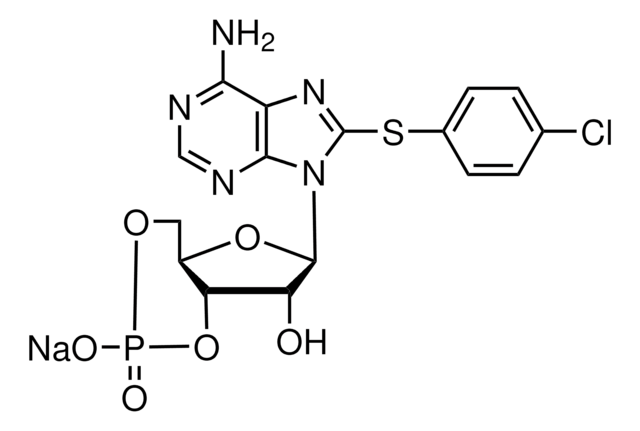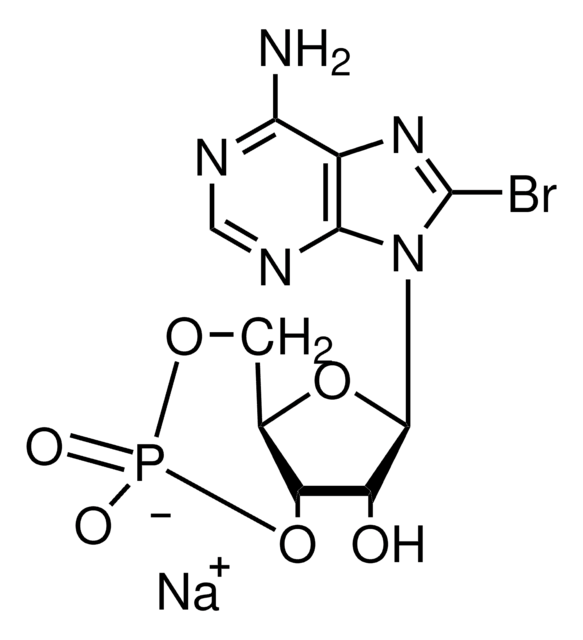557502
Ro-20-1724
≥98% (TLC), solid, cAMP phosphodiesterase inhibitor, Calbiochem
Synonyme(s) :
Ro-20-1724, 4-(3-Butoxy-4-methoxybenzyl)-2-imidazolidinone
About This Item
Produits recommandés
Nom du produit
Ro-20-1724, A cell-permeable, selective inhibitor of cAMP-specific phosphodiesterase (PDE IV; IC₅₀ = 2 µM).
Niveau de qualité
Essai
≥98% (TLC)
Forme
solid
Fabricant/nom de marque
Calbiochem®
Conditions de stockage
OK to freeze
Couleur
white
Solubilité
DMSO: 20%
ethanol: 4%
Conditions d'expédition
ambient
Température de stockage
10-30°C
InChI
1S/C15H22N2O3/c1-3-4-7-20-14-9-11(5-6-13(14)19-2)8-12-10-16-15(18)17-12/h5-6,9,12H,3-4,7-8,10H2,1-2H3,(H2,16,17,18)
Clé InChI
PDMUULPVBYQBBK-UHFFFAOYSA-N
Description générale
Actions biochimiques/physiologiques
PDE IV
Avertissement
Autres remarques
Rubin, L.L., et al. 1991. J. Cell Biol.115, 1725.
Lad, P.M., et al. 1985. Biochim. Biophys. Acta 846, 286.
Bergstrand, H., et al. 1977. Mol. Pharmacol.13, 38.
Informations légales
Code de la classe de stockage
11 - Combustible Solids
Classe de danger pour l'eau (WGK)
WGK 3
Point d'éclair (°F)
Not applicable
Point d'éclair (°C)
Not applicable
Certificats d'analyse (COA)
Recherchez un Certificats d'analyse (COA) en saisissant le numéro de lot du produit. Les numéros de lot figurent sur l'étiquette du produit après les mots "Lot" ou "Batch".
Déjà en possession de ce produit ?
Retrouvez la documentation relative aux produits que vous avez récemment achetés dans la Bibliothèque de documents.
Notre équipe de scientifiques dispose d'une expérience dans tous les secteurs de la recherche, notamment en sciences de la vie, science des matériaux, synthèse chimique, chromatographie, analyse et dans de nombreux autres domaines..
Contacter notre Service technique






